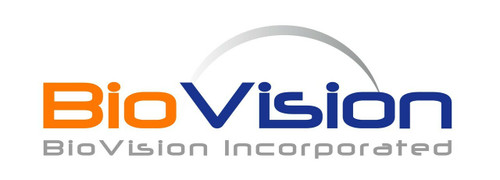Product Description
Carbonic anhydrases (CAs) are a large family of zinc metalloenzymes. CAs form a family of enzymes that catalyze the rapid interconversion of carbon dioxide and water to bicarbonate and protons (or vice versa), a reversible reaction that occurs rather slowly in the absence of a catalyst. One of the functions of the enzyme in animals is to interconvert carbon dioxide and bicarbonate to maintain acid-base balance in blood and other tissues, and to help transport carbon dioxide out of tissues. The active site of most carbonic anhydrases contains a zinc ion. They are, therefore, classified as metalloenzymes. There are at least five distinct CA families (, , , and ). These families have no significant amino acid sequence similarity and in most cases are thought to be an example of convergent evolution. The -CAs are found in humans. Carbonic anhydrase II (CA2) also known as Carbonate dehydratase II, Carbonic anhydrase C, is one of fourteen forms of human carbonic anhydrases. Defects in this enzyme are associated with osteopetrosis and renal tubular acidosis. Renal carbonic anhydrase allows the reabsorption of sodium ions in the proximal tubule. Carbonic anhydrase II has been shown to interact with Band 3 and Sodium-hydrogen antiporter 1.
Biovision | 7479 | Human CellExp Carbonic Anhydrase 2/CA2 human recombinant DataSheet
Biomolecule/Target: Carbonic Anhydrase 2/CA2
Synonyms: CA2, CA-II, CAII, Car2
Alternates names: Acrogranin, Paragranulin, Granulin-2
Taglines: A zinc metalloenzyme interconverting carbon dioxide and bicarbonate to maintain acid-base balance in blood
NCBI Gene ID #: 2896
NCBI Gene Symbol: GRN
Gene Source: Human
Accession #: P28799
Recombinant: Yes
Source: HEK293 cells
Purity by SDS-PAGEs: 90%
Assay: SDS-PAGE
Purity: N/A
Assay #2: N/A
Endotoxin Level: <1 EU/g by LAL method
Activity (Specifications/test method): N/A
Biological activity: Measured by chemotaxis using THP-1 cells.
Results: N/A
Binding Capacity: N/A
Unit Definition: N/A
Molecular Weight: 88.0 kDa
Concentration: N/A
Appearance: Lyophilized
Physical form description: Lyophilized from 0.22 m filtered solution in 20 mM Tris, pH 8.0, with 150 mM NaCl, 1 mM DTT. Normally Mannitol or Trehalose is added as protectants before lyophilization.
Reconstitution Instructions: N/A
Amino acid sequence: N/A
 Euro
Euro
 USD
USD
 British Pound
British Pound
 NULL
NULL












